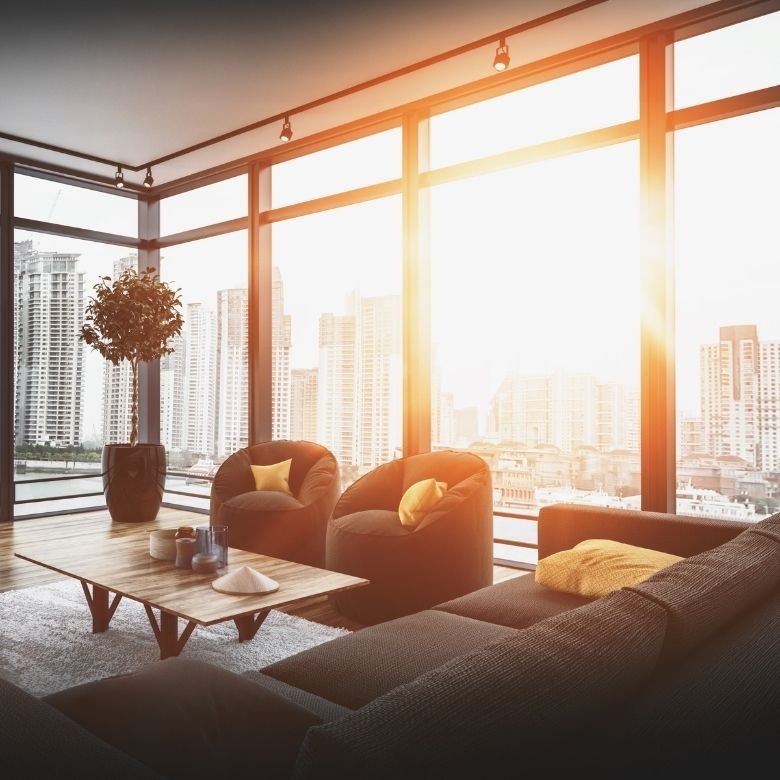Glass panes constitute an inherent part of the majority of buildings. They have been used for hundreds of years in their current form. Technological development has caused innovation, thanks to which panes can play a brand-new role. You can read about it in our article.

In this era of climate crisis, more and more branches of industry are focusing on their ecological impact. One of them is the construction industry. A method to build eco-friendly buildings is to design them taking exposure to sunlight into consideration. By doing so we reduce the amount of energy needed to be produced to provide artificial room lighting. However, there are also new solutions on the market, thanks to which we can not only save but also produce energy.
Long history
Humanity has been familiar with glass for thousands of years. The traces of its use date back to 3,500 years ago to Mesopotamia, where it was used as a material to produce dishes and ornaments. The manufacturing technology of thin glass plates that were used as panes was improved in the 14th century in France. Since then, they have become an inherent part of almost every building. The current manufacturing method for glass panels was only recently invented in the 1950s by the Briton, Sir Alastair Pilkington.

Transparent innovation
Panes have become a significant subject of debate vis-a-vis the development of eco-friendly construction. One of the ideas is to use a large amount of glass to illuminate the interiors naturally. The aim is to limit the amount of energy needed to be produced to be consumed by artificial lighting. What would happen if the intelligent use of panes could help not only in saving the consumption of energy but also help save in its production? Thanks to technical development, this idea has become a reality. The innovative solution originated in Australia. In this revolutionary technology, an organic semiconductor is used that can be converted into a polymer. It replaces one of the commonly used solar panel components – Spiro-OMeTAD. During tests, they reached the power generation efficiency on a slightly lower level than by using traditional solar panels. Not only the efficiency is significant, but also the costs of implementation of this innovative solution. Scientists estimate that thanks to the prevalent use of already existing technologies the cost of implementation of the new solution, for example in big panes used in skyscrapers, will be within acceptable financial limits. Together with other modern technologies, it will make many buildings energy self-sufficient. It means that the demand for the use of energy obtained using traditional, less eco-friendly methods will be reduced.

The construction industry becoming more and more eco-friendly
Panes that generate electricity together with other advanced technologies such as solar panels, thermal insulation, or eco-friendly wood-based materials, can redefine the way we perceive the construction industry. It can switch from being an industry that generates a lot of pollution (for example through the production of concrete) creating its end products – the buildings – which consume large amounts of energy, into one of the most innovative and eco-friendly branches of industry. This is crucial due to the growing population, which means that there will be the need to build more new buildings. The modernisation of pre-existing buildings will also be possible too, so that they can meet the requisite eco-friendly standards. The development of eco-friendly solutions in the construction industry should be one of the top priorities for our global eco-friendly efforts. Experts from the PCC Group also adhere to this idea, and they design and implement new chemical substances from the GREENLINETM group. This product range consists of, for example, modern spray insulation that makes it possible to lower energy consumption and as a result to significantly reduce greenhouse gas emissions into the atmosphere.
Sources:
https://www.pveurope.eu/solar-generator/window-glass-will-soon-generate-electricity
https://www.onyxsolar.com/